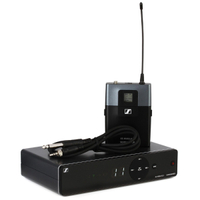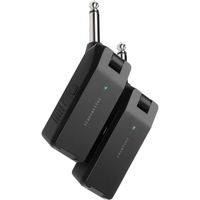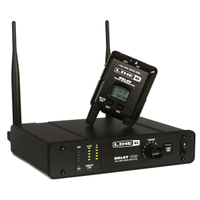Best guitar wireless systems 2025: Cut the cord and liberate your playing today
Invest in a transmitter/receiver and ditch trailing cables with our pick of the best wireless guitar systems from beginner to pro
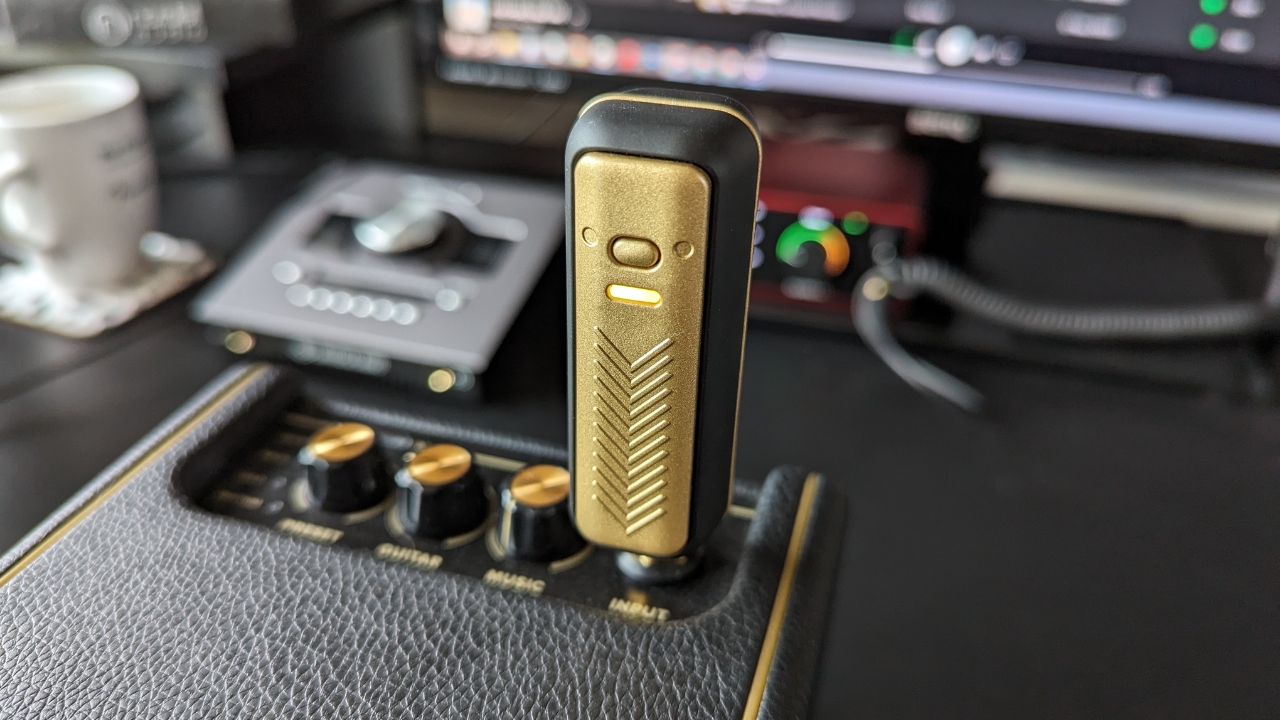
Aside from giving you the ability to run around the stage unbound by the shackles of traditional cables, the best guitar wireless systems can give you peace of mind and even a better live sound.
Knowing that you’re not going to get tangled up with your bandmates while playing on small, cramped stages can help you to relax as there’s less worrying about standing on each other's cables. During a soundcheck, the best guitar wireless systems also enable you to go into where the crowd will stand to ensure that your levels and tone are sitting exactly where they need to be.
Wireless systems are also great for home use, especially if you’re trying to keep a tidy ship. Not having to run a cable from your guitar to your amp means there’s one less thing to set up and one less thing to cause a trip hazard.
If you're looking for the best overall guitar wireless system, I'd highly recommend the Line 6 Relay G10S, which has all the features that make it uber guitar-friendly, including a pedalboard-mounted charger and receiver. If you haven't got loads to spend, don't worry, wireless guitar systems are more affordable than ever, and the Xvive U2 is available for around the $150 mark. Superb value for money.
If you have any other concerns about moving to a wireless system, go check out our FAQs section, which answers loads more common questions. If you're ready to take the plunge, then keep scrolling for our top picks...
Our top picks
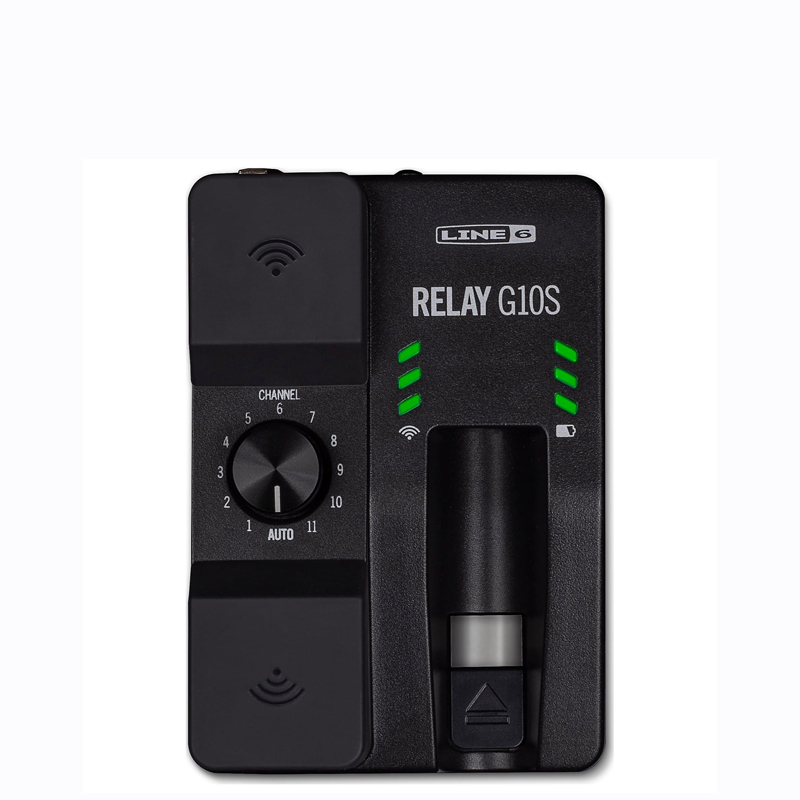
The Relay G10S II wireless guitar system is designed for integration with pedalboards, thanks to a rugged metal stompbox receiver and 9V power supply operation. Intelligent set-up features mean the unit should locate and lock onto the strongest available wireless frequency as soon as the transmitter is docked in the receiver.
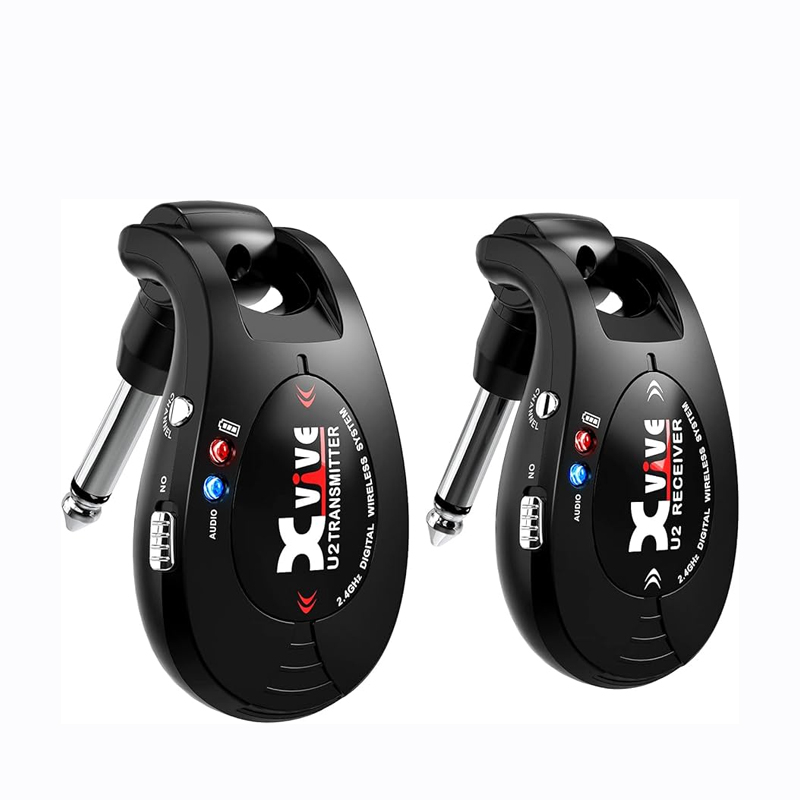
Operation is simple: plug the transmitter into your guitar, the receiver into an effects pedal or amp, then turn them on. Once the two are talking to each other, you're good to go. The setup process is simple, then, and you're also promised high-quality audio performance, great tone and reliability.
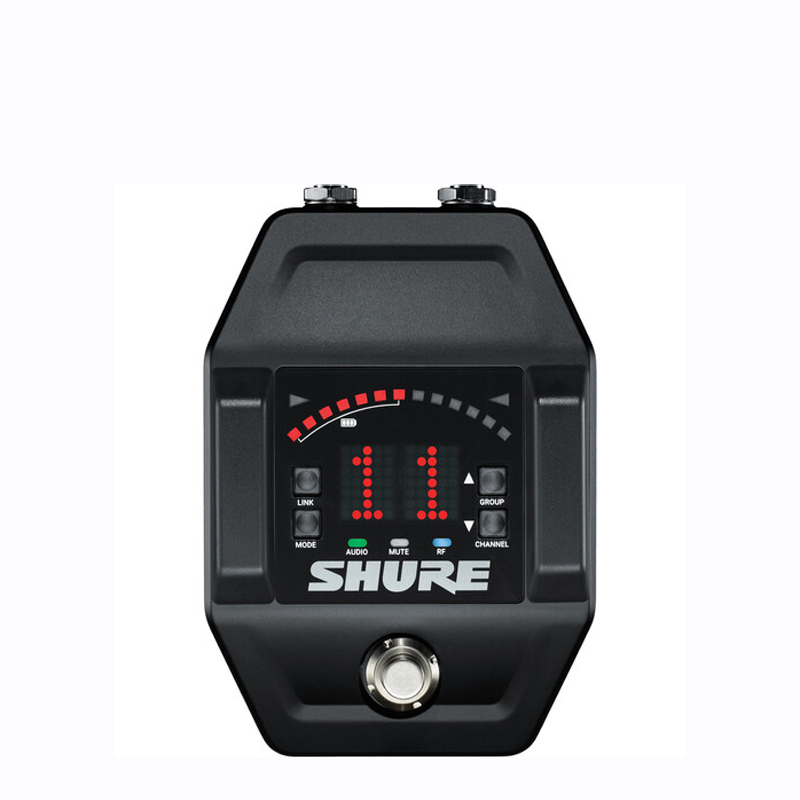
There's automatic frequency management that's designed to deliver a reliable, rock-solid signal, while exceptional audio quality is also promised. You're looking at 17 hours of continuous use in the 2.4GHz range and 12 hours in 5.8GHz before the transmitter's built-in batteries need to be recharged.
Best overall
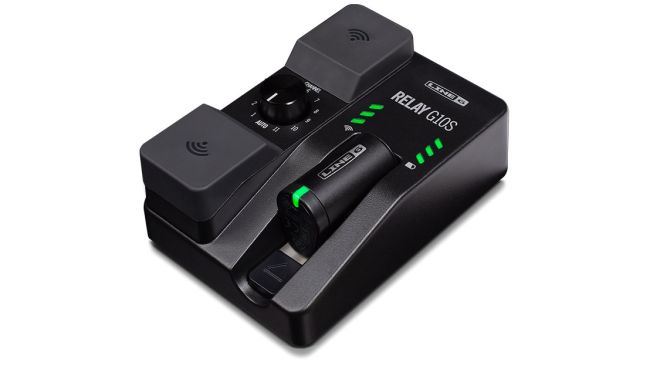
1. Line 6 Relay G10S
Our expert review:
Specifications
Reasons to buy
Reasons to avoid
✅ Buy if you want the best overall: Easily integrating with your pedalboard and quick to set up, the Line 6 Relay G10S II is our favourite overall wireless guitar system.
❌ Avoid if you have active pickups: These types of wireless system don't always play nice with active pickups, so something to look at if any of your guitar have these.
The Relay G10S II wireless guitar system is designed for integration with pedalboards, thanks to a rugged metal stompbox receiver and 9V power supply operation. Intelligent set-up features mean the unit should locate and lock onto the strongest available wireless frequency as soon as the transmitter is docked in the receiver. The system provides 24-bit audio quality with up to a 130-foot line-of-sight range.
Around the rear of the receiver is a control to simulate guitar cable capacitance, plus XLR and 1/4-inch outputs and a USB connection. The included G10TII transmitter features a rechargeable battery that delivers eight hours of playtime on a single charge, so even if you're playing a marathon set, it should have you covered.
The only small criticism we can think of is the G10TII’s unremovable built-in battery. If you’re caught short on battery at a gig you can’t throw in a backup to get you up and running – recharging is required. Perhaps not ideal for those people who are forgetful of their chargers.
Best budget wireless
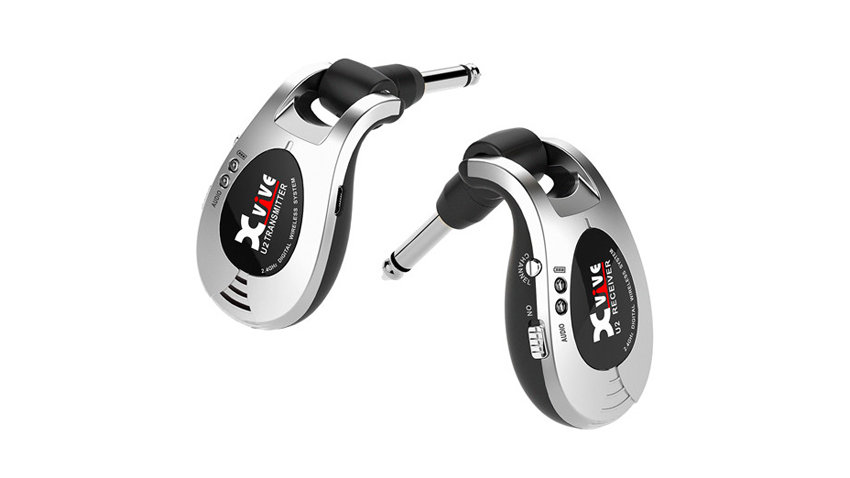
2. Xvive U2 guitar wireless system
Our expert review:
Specifications
Reasons to buy
Reasons to avoid
✅ Buy if you want to save money: Coming in around the $150, it isn't necessarily cheap, but considering the cost of some of the other units here, it is excellent value for money.
❌ Avoid if you want something for touring: While the plasticky build of the U2 is solid enough, we're not sure it'll put up with the rigours of a full touring schedule.
It's got nothing to do with Bono et al, but the U2 could still be the guitar wireless system you've been looking for. Operation is simple: plug the transmitter into your guitar, the receiver into an effects pedal or amp, then turn them on.
Once the two are talking to each other, you're good to go. The setup process is simple, then, and you're also promised high-quality audio performance, great tone and reliability.
The U2 might be made out of plastic, but it promises to be pretty durable. The five-hour running time isn't as much as on some of the other systems, but that should still be more than enough to keep you roaming the stage for an entire gig.
The U2 is still incredibly popular, though Xvive has recently introduced the A58 system, which boasts a few upgrades; longer range, sleeker design, plus it now operates within the 5.8GHz band.
Best pro option
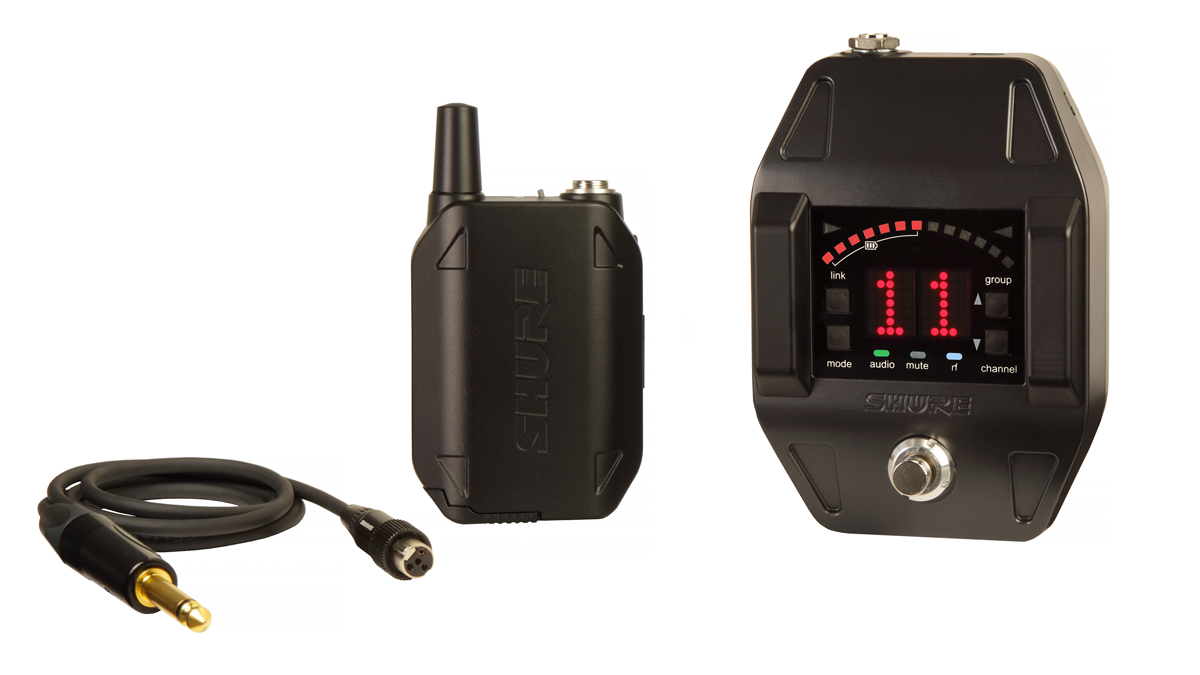
3. Shure GLXD16 guitar wireless system
Our expert review:
Specifications
Reasons to buy
Reasons to avoid
✅ Buy if you want to gig regularly: With its built-in tuner, not only does the GLXD16 save a precious pedalboard power slot, but it comes ruggedly built with plenty of pro-level features.
❌ Avoid if you're on a budget: This is a pretty expensive system, so one to avoid if you're shopping on a tight budget.
A three-part package, this guitar and bass-friendly bundle includes the GLXD6 receiver, which sits on your pedalboard and has the added bonus of a built-in tuner, the GLXD1+ bodypack and the WA305 cable, which is used to connect the bodypack to your guitar.
There's automatic frequency management that's designed to deliver a reliable, rock-solid signal, while exceptional audio quality is also promised. You're looking at 17 hours of continuous use in the 2.4GHz range and 12 hours in 5.8GHz before the transmitter's built-in batteries need to be recharged.
The transmitter itself is made of metal for extra durability. This is a comprehensive package, then, albeit one that costs more than some of the competition.
Best pedalboard
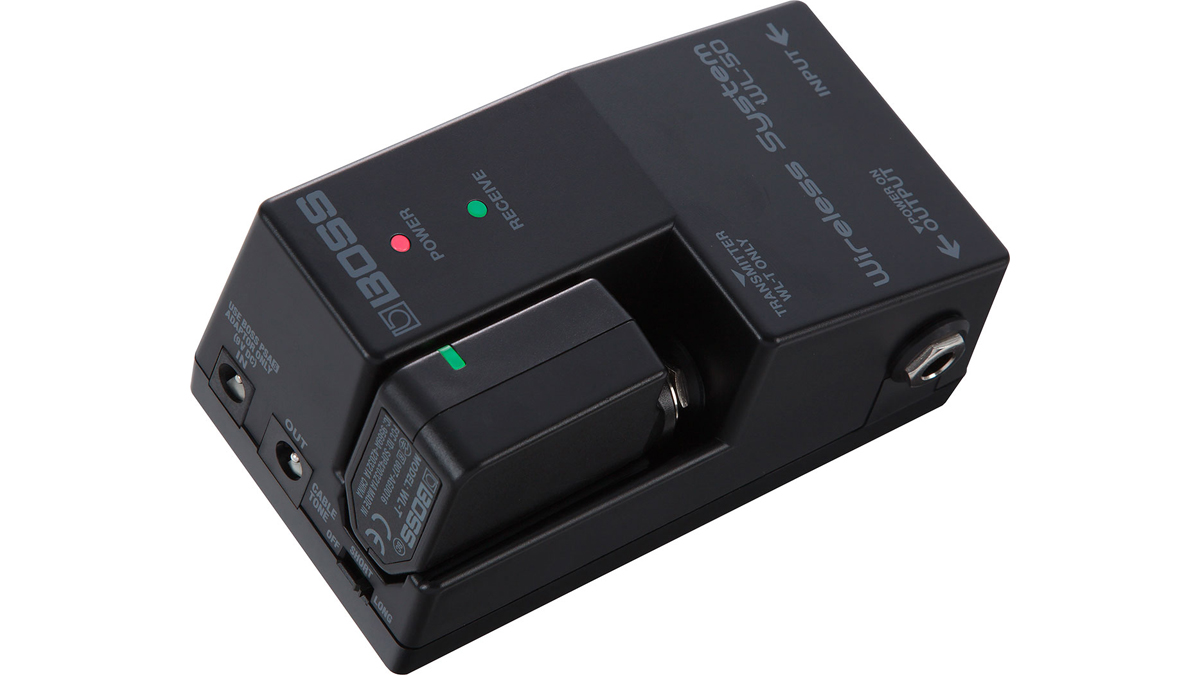
Specifications
Reasons to buy
Reasons to avoid
✅ Buy if you use a pedalboard: With its easy pedalboard mounting and additional power out for supplying another pedal, the WL-50 is a brilliant option for guitarists with busy 'boards.
❌ Avoid if you don't use a pedalboard: This system doesn't really work unless it's pedalboard-mounted, so if you're a straight into the amp kind of player then look elsewhere.
Another pedalboard-based guitar wireless system, the WL-50 promises plug 'n' play operation and features a receiver that sits right on your pedalboard. Wireless connection is set automatically and we're promised low latency, rock-solid performance, and a decent operating range.
The transmitter can be used for up to 12 hours at a time and slots neatly into the receiver's docking port when you need to charge its battery. The receiver can run on two AA batteries or get its juice from the optional PSA-A adapter.
Choose the latter option and its DC output can distribute power to one or more other pedals using an optional daisy-chain cable, which could prove useful. There are also selectable cable tone simulation options: short, long, and bypass.

"The WL-50 looks great, and it’s unintrusive. It’s about the same size as a regular stompbox, so it’s easy to fit in alongside all your other pedals. The fact that it’s powered in the same way as the rest of your pedals also makes life easier. If you forget to charge your transmitter at home, you can turn up to a show and get an hour or so charging time between soundcheck and show time, and you’ll be good to go."
Read more: Boss WL-50 review
Best for home
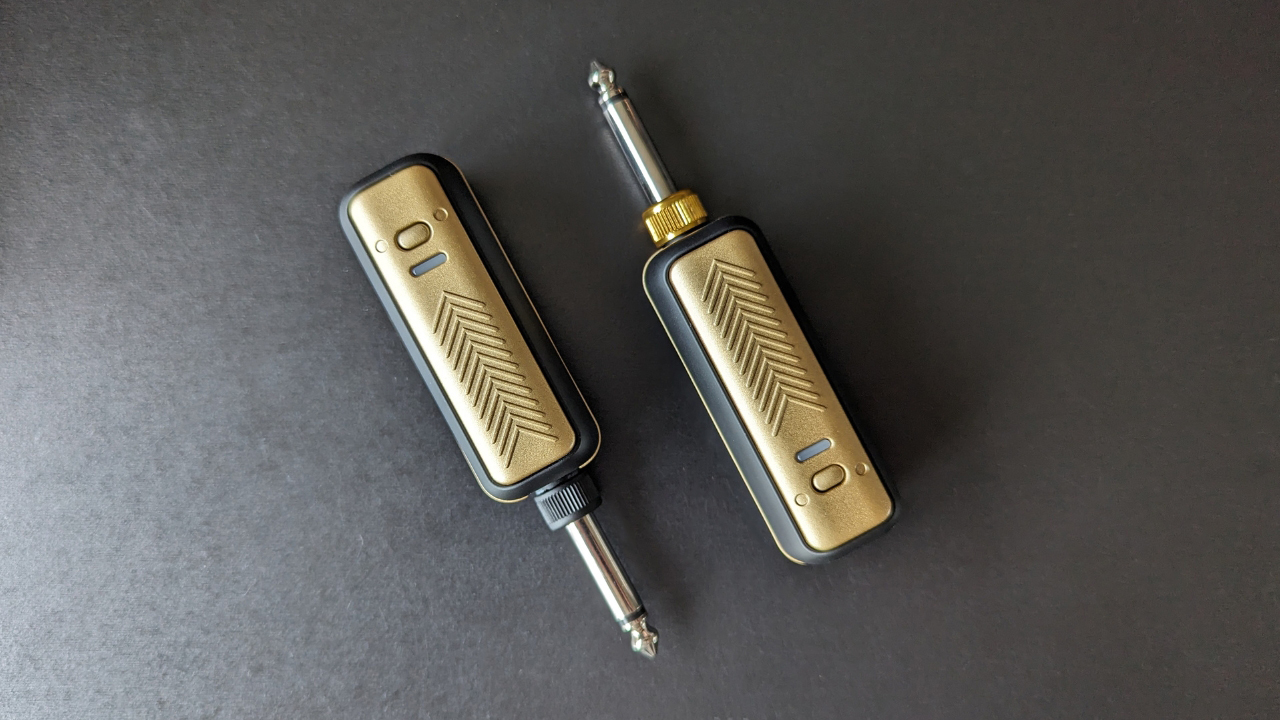
Specifications
Reasons to buy
Reasons to avoid
✅ Buy if you want to play at home: For us, this is the perfect wireless unit to pair with a practice amp being low cost, great quality, and simple to use.
❌ Avoid if you want something for gigging: With no way to charge other than to use USB-C and no way to house it neatly, we'd avoid the Spark Link if you're a regularly gigging player.
If you're only really playing at home, a wireless guitar system can be worth its weight in gold keeping your space cable free. For us, the Positive Grid Spark Link is a great choice for home users being simple to use and providing great sound quality.
Both receiver and transmitter look very similar, so it'll take you a while to get used to them but pairing is a breeze, and the handy light indicators let you know how much juice you've got left. In my tests, they lasted over many days of consecutive practice before needing a charge, and they come with USB-C slots so you can use your phone charger or more modern laptops to do so.
The range is fantastic and I was able to walk all around my two-bed home without any loss of signal. Overall I found the quality to be excellent too, there was no dropout at any point, nor did I notice any signal degradation, giving me a very cable-like feeling from the playability.

"It’s a simple bit of kit, but the Positive Grid Spark Link does a fantastic job of making wireless systems accessible for every guitarist. It’s easy to set up, sounds great, and at the time of writing, it costs less than its competitors in the Boss WL 50 and Line 6 Relay G10S whilst offering equally good performance. Aside from the lack of a dedicated pedalboard charging facility, I can think of little reason why this wouldn’t make the perfect first wireless guitar system for any guitarist."
Read more: Positive Grid Spark Link review
Best for touring
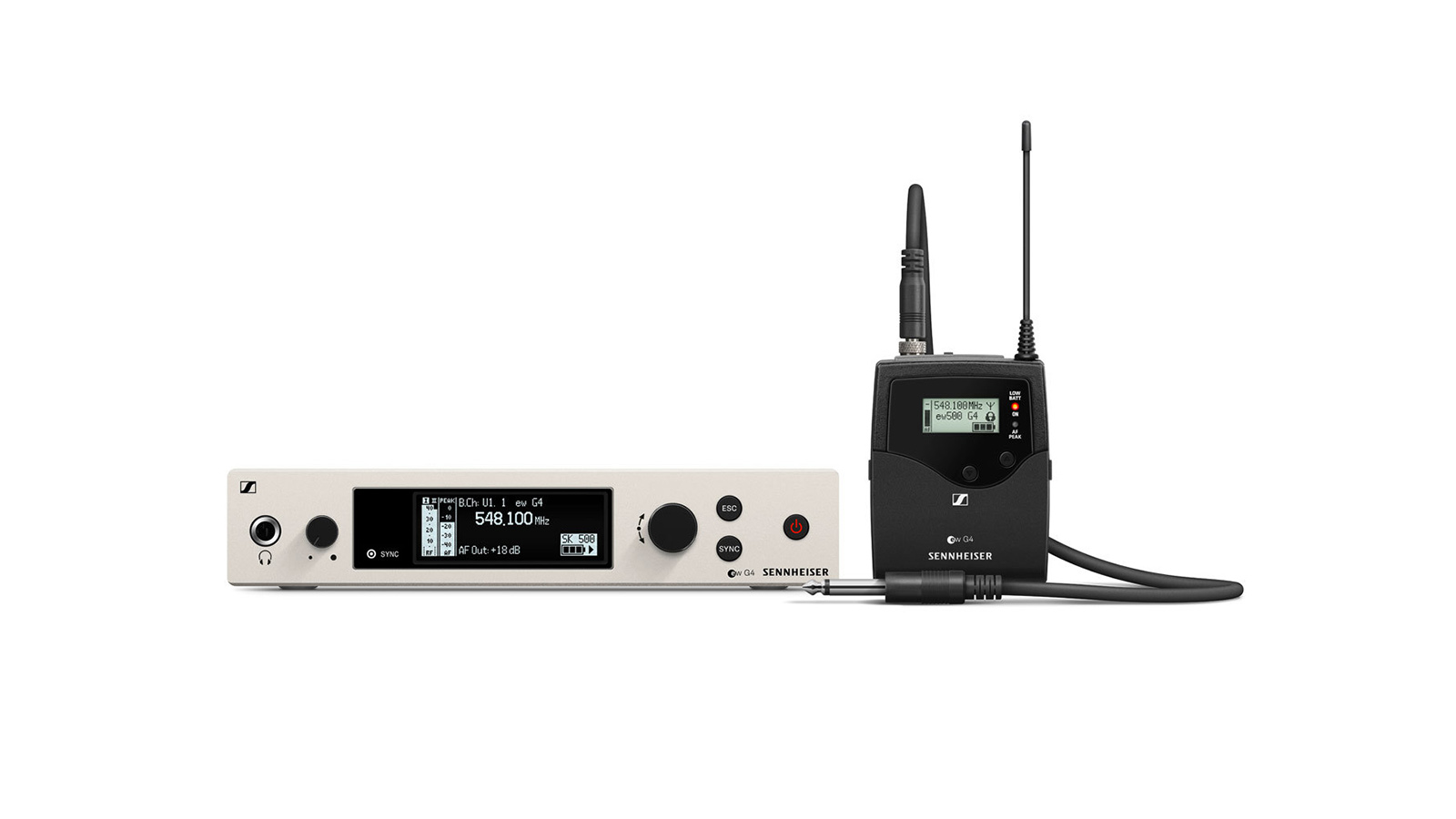
6. Sennheiser EW 500 G4 Ci1
Our expert review:
Specifications
Reasons to buy
Reasons to avoid
✅ Buy if you want a touring-grade wireless system: Strictly for pro players, this Sennheiser wireless guitar system is rack mountable, making it ideal for players with a pro-level backline.
❌ Avoid if you only play at home: This unit would be total overkill if you're a pure bedroom player.
Sennheiser doesn't need to oversell this unit. It looks professional because it is – and it has a price tag to match. At this level, a lot of the unit's concern is flexibility and expandability for larger setups and stages.
That means in terms of specs that there's ethernet for connecting to Wireless Systems Manager control software to coordinate frequencies in multi-channel setups, the ability to run banks of the units together and a wide variety of available peripherals, from rack mounts to both own-brand and third-party antennas and paddles.
If you're looking for a unit that can grow with your ambitions, then something at this end of the market is it.
Best for Fenders
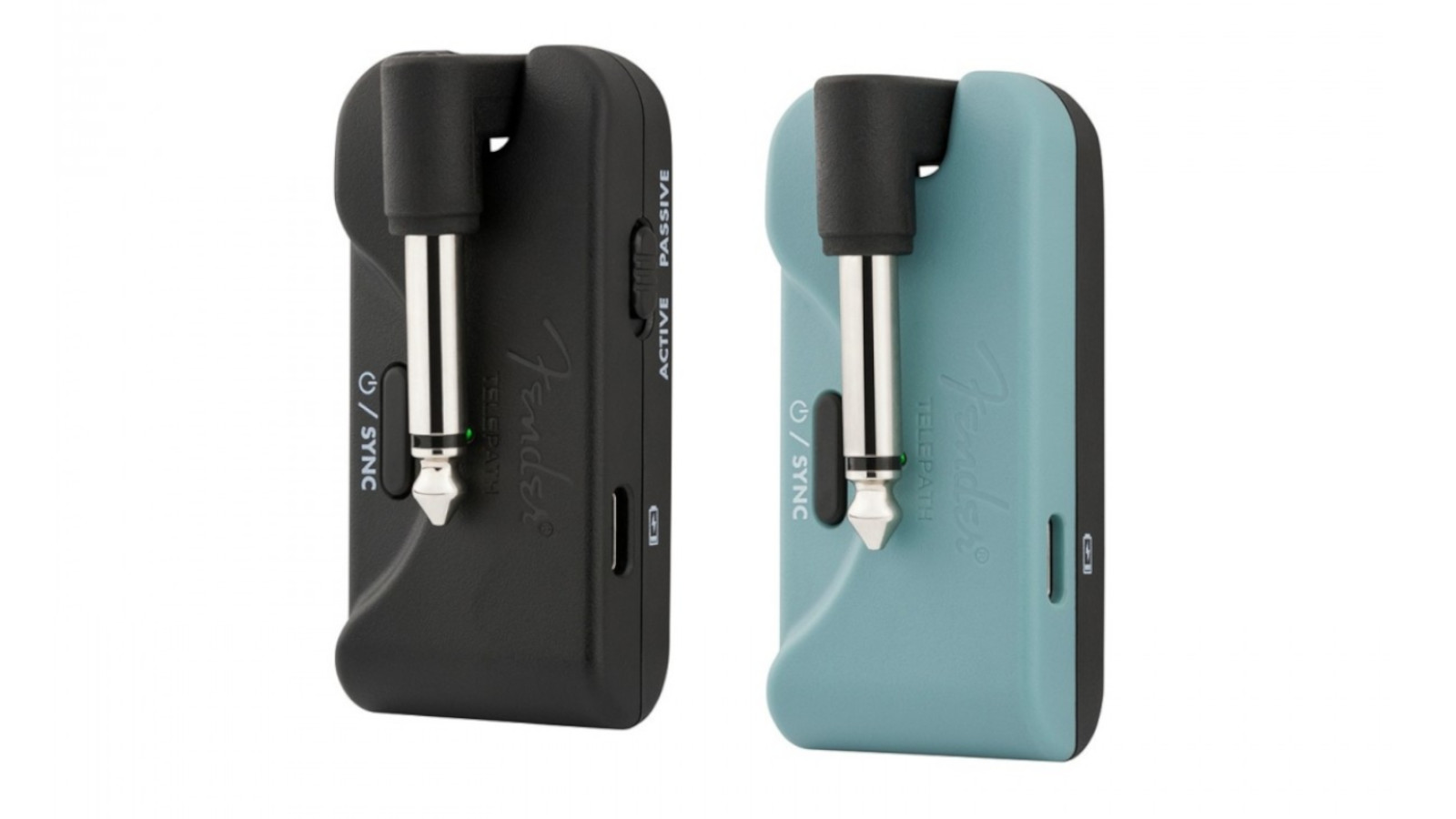
7. Fender Telepath
Our expert review:
Specifications
Reasons to buy
Reasons to avoid
✅ Buy if you have a Fender guitar: Due to its sleek design, this unit is ideal for all Fender and Squier models.
❌ Avoid if you need more features: This is a very basic unit, so if you want more features, I suggest looking elsewhere.
It felt like only a matter of time before Fender joined the many other companies making affordable yet reliable wireless guitar systems, and now here it is: the Telepath.
The Telepath offers up to 70 feet of range, which should be enough for some pretty big venues. It transmits across the 5.8GHz frequency band, so it should be less prone to unwanted interference. This thing automatically pairs with the receiver, too, making it really easy to get going quickly. You’ve also got an active/passive switch that accommodates for different output signals coming from all manner of guitars and basses.
You might find that some Fender guitar output jacks aren’t compatible with particular wireless jack plugs. As you’d expect with this, the jacks fit in perfectly into various Strats, Teles, etc.
Best budget pedalboard option
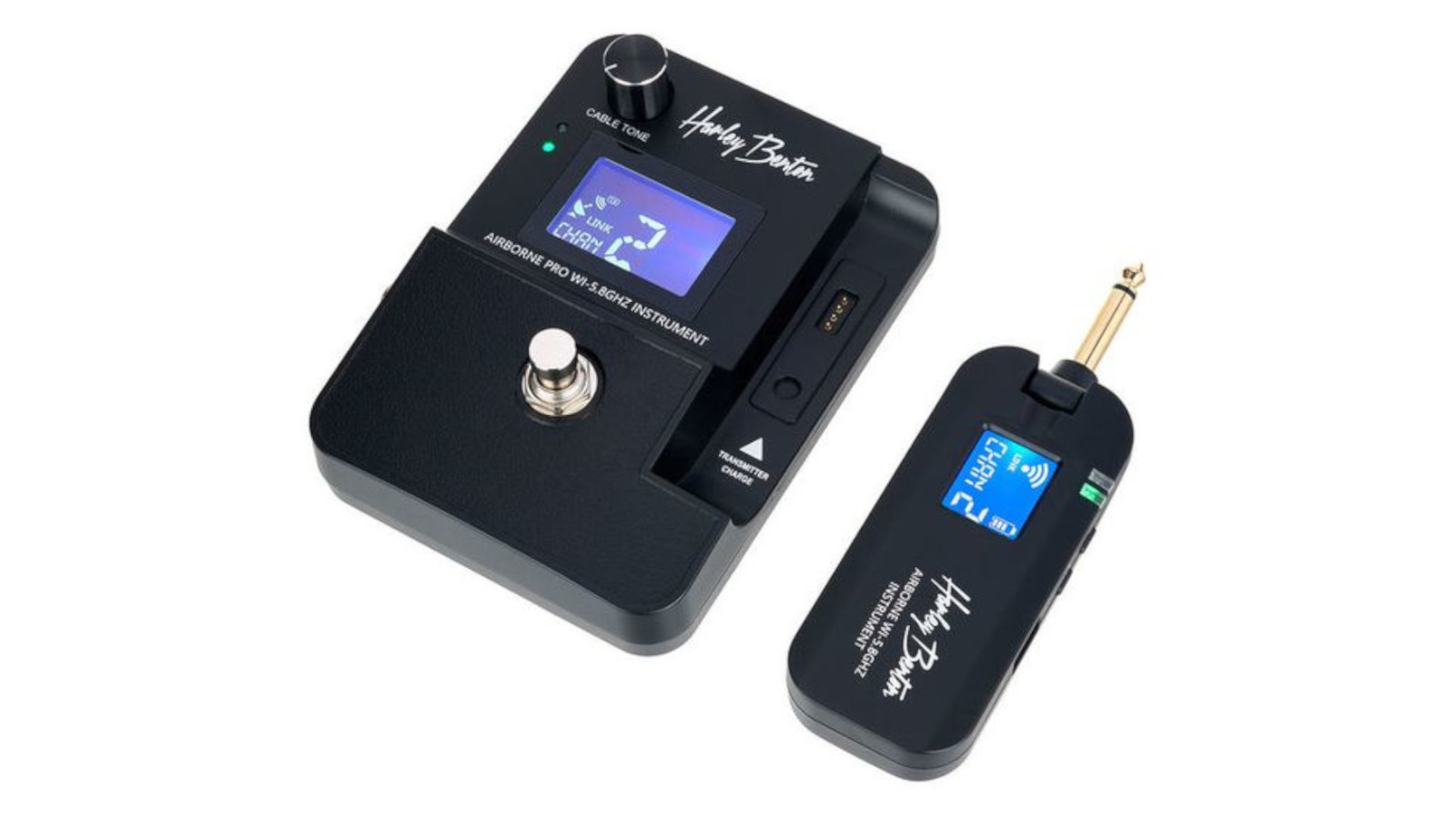
8. Harley Benton AirBorne Pro
Our expert review:
Specifications
Reasons to buy
Reasons to avoid
✅ Buy if you need a pedalboard option on a budget: With its compact design and integrated tuner, this unit from Harley Benton is our top choice for a budget 'board system.
❌ Avoid if you want something for long tours: While the AirBorne Pro feels robust enough for most local shows and light touring, we're not sure it'll meet the demands of a full-scale touring schedule.
Harley Benton’s budget wireless kit provides players with a great pedalboard option for not a lot of cash.
Place the receiver at the start of your pedalboard chain and go from that into the rest of your pedals. It also doubles as a tuner, so you can save space and money that way too. When you’re not using the transmitter, but your board is still plugged in (between soundcheck and show time, for example), you can dock it onto the receiver to charge it up so you’re not having to find another plug socket.
It’s got a transmission distance of up to 35 metres, using the 5.8GHz frequency band. You’ve got four channels to choose from, just in case there are other wireless systems in use, and a latency of just 5.6ms which is essentially inaudible.
Also consider
For us, the above wireless systems are the ones guitarists should be looking at. Of course, we appreciate they won't meet everyone's needs, so here's a selection of alternatives for you to consider.
Sennheiser XSW 1-Cl1
8ms | 50 Hz - 16 KHz | 2.4 GHz
The XSW 1-Cl1 has the look of a more traditional wireless system, comprising a bodypack transmitter and desktop receiver unit. You can play for up to 10 hours, while automatic frequency management and sync via remote channel should make for easy setup. If you're playing in a large band, rest assured that you can use up to 10 of these systems simultaneously.
★★★★☆
Ibanez WS1
<5ms | 20Hz - 20kHz | 2.4 GHz
The WS1 is compatible with both electric and bass guitars with a generous range of 30 metres. The main attribute that sets it apart from other affordable competitors is its “cable-tone mode”. This setting is specifically designed for passive pickups replicating the tonal characteristics of a high-quality 10-foot guitar cable. This allows you to roam the stage as you please without compromising on signal.
★★★★☆
Line 6 Relay G55
< 2.9ms | 10Hz - 20KHz | 2.4 GHz
Despite being cheaper than some of its competitors like the Sennheiser EW 500 series, the G55 is a rackable, touring-grade solution that can be combined with other Line 6 wireless units and vocal systems, with up to 12 running at once. Also, though it's admittedly probably a niche concern, in case you're worried that your tone will be affected by not having runs of guitar cable, the G55 can emulate the frequency roll-off you'd expect from a 25ft length of guitar cable.
★★★★½
FAQs
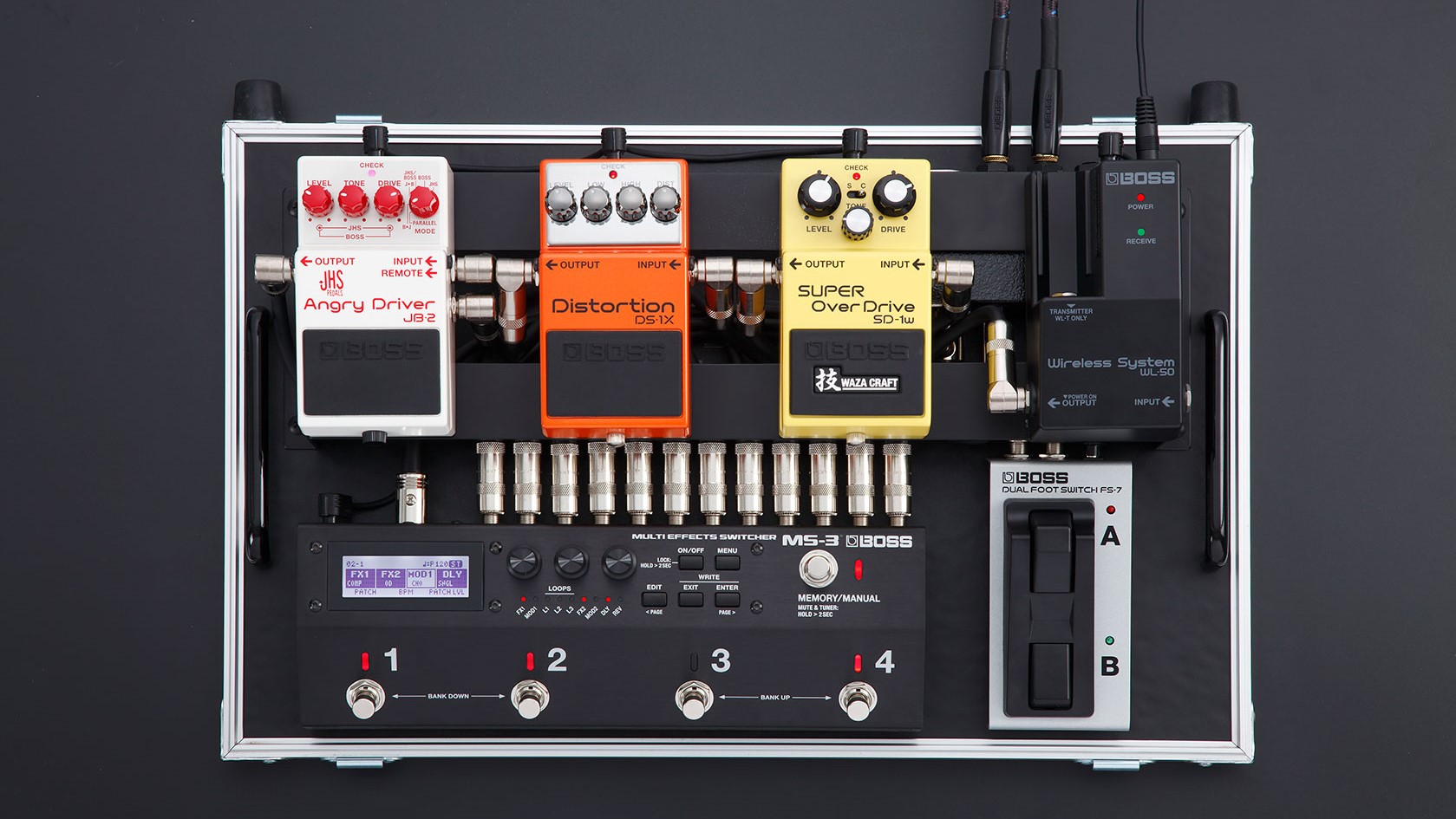
How do guitar wireless systems work?
Without going into the science of it all, a wireless system is made up of two parts – a transmitter and a receiver. The transmitter turns the signal generated by the pickups into one that can be sent wirelessly to the receiver. The receiver then decodes that signal and turns it into something that your amp can work with.
Sometimes, the transmitter will be in the form of a dongle with a jack plug attached to it that plugs straight into your guitar, and other times, you’ll take a short cable out of the guitar into the transmitter that’s usually worn on your strap.
The receiver plugs either straight into your amp or goes at the start of your pedal chain – which is why you’ll see some that are in the form of pedals.
What is GHz?
When looking at the best guitar wireless systems, you’ll see GHz being used a lot. It simply refers to gigahertz, which measures frequency. Quite often, wireless units operate on 2.4GHz, though many newer models are using 5.8GHz.
A lot of everyday household items like wi-fi routers use the 2.4GHz frequency band, so you might be prone to more interference depending on what else is going on around where you’re using it. In some instances, 5.8GHz might offer more stability, but you may have to compromise on range.
Power options
MusicRadar's got your back
The transmitter in your guitar wireless system will be designed to run on battery power. Increasingly, these systems come with built-in rechargeable batteries, or they take standard batteries that can be changed as required.
Regardless of the power option you choose, if you head to a gig or practice fully charged, there's no need to worry about running out of juice halfway through; today’s guitar wireless systems can keep running for many hours without coughing and spluttering, so you can sleep easy knowing your 14-minute guitar solos won't be dampened by your fancy new wireless setup jibbing out on you.
How much range do I need in my wireless system?
One thing you will want to consider when purchasing a wireless system is its range. You may have noticed that the more expensive systems have a longer range, allowing you to play further away from the receiver. However, this may not always be necessary for your situation. You should consider where you are likely to be playing the majority of the time.
If you, like most of us, are more likely to grace the stage of your local DIY venue then you don’t need to break the bank on a professional wireless system with a range of over 3 miles. Save yourself a bit of money and go with a more affordable option like the Xvive U2. Although, if you are on the up and have gained a spot on an international tour supporting Iron Maiden, then a system like the Line 6 Relay G55 will give you much more distance so you can gallop the stage freely.
Do you lose tone with a wireless guitar system?
So, considering all the obvious benefits of a wireless guitar system, one might wonder if there are any downsides. Some argue that using a wireless system can affect your guitar's tone, but is this really true? Well, in our opinion, not really - especially if you choose the right product for your set-up.
Similar to a wired cable, anything that comes between your guitar and amplifier has the potential to influence what you hear. However, if you opt for a high-quality wireless system with the appropriate range for your gig, you won't notice any difference in audio quality compared to using a cable. While a cheap wired cable might cause issues like buzz and hiss, a low-quality wireless guitar system is also prone to breakage. However, these issues won't significantly impact your tone any worse than a guitar cable would.
Aren’t wireless systems just for huge arena bands?
Some people have the perception that the best guitar wireless systems are reserved for people in huge bands playing stadiums and arenas. While that used to be the case, it isn’t anymore. Not only are wireless systems now more affordable than ever, they’re also becoming a more common sight in smaller venues, studios and even at home. Using a wireless system means there are fewer cables, which in a confined space can really make a big difference.
Also, with more and more home practice amps allowing for wireless streaming of music via Bluetooth, it makes sense that the connection from guitar to amp follows suit.
How we choose products
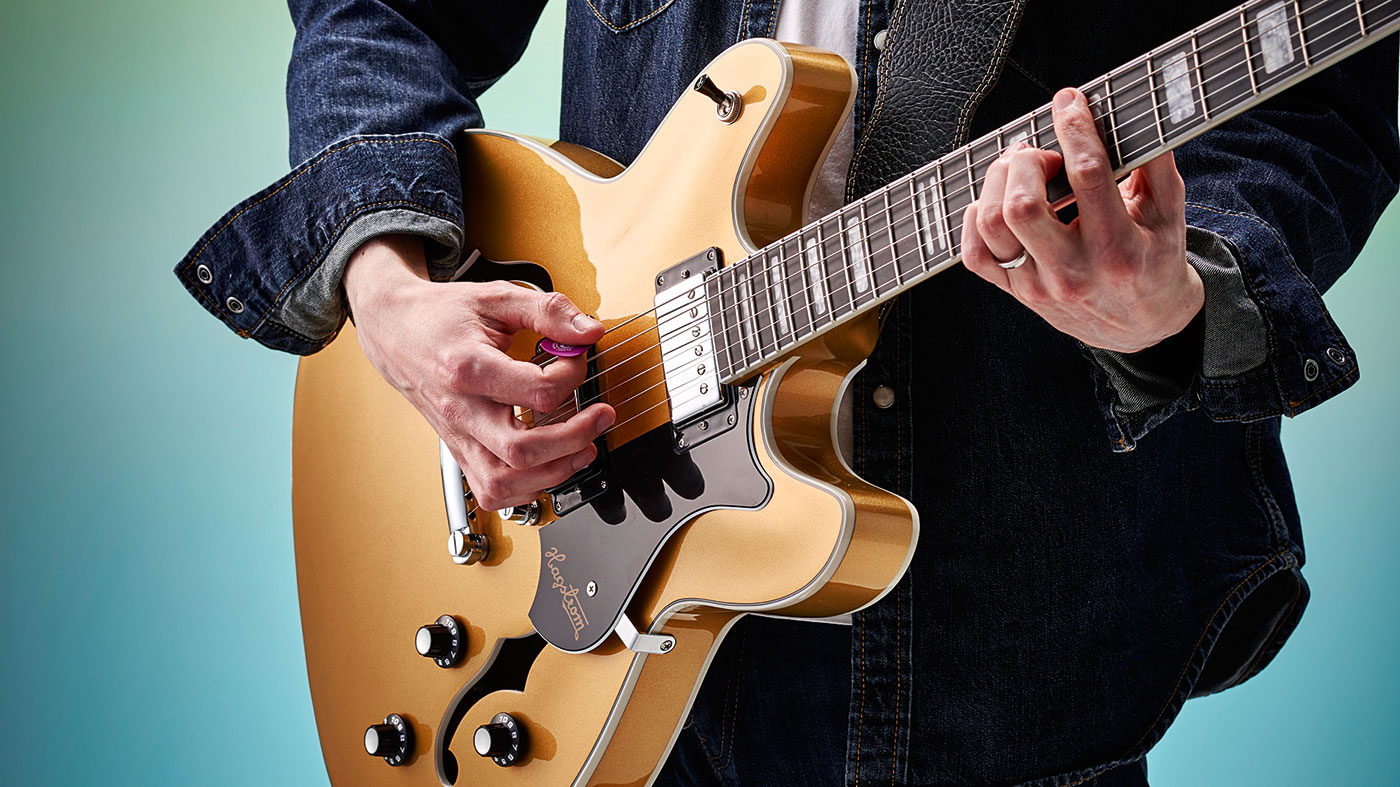
Here at MusicRadar, we are experts in our field, with many years of playing, creating and product testing between us. We live and breathe everything music gear related, and we draw on this knowledge and experience of using products in live, recording and rehearsal scenarios when selecting the products for our guides.
When choosing what we believe to be the best wireless guitar systems available right now, we combine our hands-on experience, user reviews and testimonies and engage in lengthy discussions with our editorial colleagues to reach a consensus about the top products in any given category.
First and foremost, we are musicians, and we want other players to find the right product for them. So we take into careful consideration everything from budget to feature set, ease of use and durability to come up with a list of what we can safely say are the best wireless guitar systems on the market right now.
Find out more about how we test music gear and services at MusicRadar.
Why trust us?

✔️ More than 9,500 reviews on-site
✔️Over 17 years of product testing
✔️ 2.9 million monthly users globally
MusicRadar has been in operation since 2007 and has been helping people on their musical journey since then. No matter if you're a producer, guitarist, drummer, keyboardist or DJ you'll find useful information across the site, while our team of experts and industry pros regularly put instruments and gear through their paces to help you make an informed decision.
Along with our in-depth buyer's guides, MusicRadar also provides all the latest news, reviews and how-to features to provide as music information on the music world as possible.
Thanks to you, we receive three million visitors per month, making us the one-stop shop for music makers and lovers worldwide - and we also feature content from our magazine titles such as Future Music, Computer Music, and eMusician.
Meet the experts

Mike is Editor-in-Chief of GuitarWorld.com, in addition to being an offset fiend and recovering pedal addict. He has a master's degree in journalism, and has spent the past decade writing and editing for guitar publications including MusicRadar, Total Guitar and Guitarist, as well as a decade-and-a-half performing in bands of variable genre (and quality). In his free time, you'll find him making progressive instrumental rock under the nom de plume Maebe.

Ross has been a music lover and guitar player since the age of 8. He has spent the five years since graduating from university working in music retail, selling guitars, amps and more. Ross is particularly interested in electric guitars, pedals and amplifiers and his current rig includes a trusty 2009 American Standard Stratocaster and Vox AC30S1 with a few Walrus Audio and Way Huge pedals in between.

Matt has been recording bands since the mid-noughties, cutting his teeth with an M-Audio M-Track 2 and a copy of Cubase on Windows XP. Since then he's used countless audio interfaces to record music for bands across the UK, covering everything from djent to jazz. As a MusicRadar writer, Matt has reviewed 15 audio interfaces in the past year alone, and over 50 different products including guitars, amps, and pedals. Before becoming a writer, he spent five years in the music retail industry working for Dawsons Music and Northwest Guitars, providing expert advice to musicians. He’s currently studying Music Production at Spirit Studios in Manchester, UK.

After spending a decade in music retail, Richard is now a freelance writer for MusicRadar, Guitar Player, Guitar World and Reverb, specialising in electric and acoustic guitars, bass, and almost anything else you can make a tune with. When his head’s not buried in the best of modern and vintage gear, Richard runs a small company helping musicians with songwriting, production and performance, and plays bass in an alt-rock band. Otherwise, you'll probably find him out walking the dog!
Related buyer's guides
- The best in-ear monitors you can buy right now
- Tune up with the best guitar tuners
- The best pedalboard power supplies
- The best multi-effects pedals for guitarists
- Find the best guitar picks for your playing style
- Check out these gifts for guitarists
Get the MusicRadar Newsletter
Want all the hottest music and gear news, reviews, deals, features and more, direct to your inbox? Sign up here.
Mike is Editor-in-Chief of GuitarWorld.com, in addition to being an offset fiend and recovering pedal addict. He has a master's degree in journalism, and has spent the past decade writing and editing for guitar publications including MusicRadar, Total Guitar and Guitarist, as well as a decade-and-a-half performing in bands of variable genre (and quality). In his free time, you'll find him making progressive instrumental rock under the nom de plume Maebe.
- Matt McCrackenJunior Deals Writer
- Ross Holder
- Richard Blenkinsop
“Built from the same sacred stash of NOS silicon transistors and germanium diodes, giving it the soul – and snarl – of the original”: An octave-fuzz cult classic returns as Jam Pedals resurrects the Octaurus
“A purpose-built solution for bassists seeking unparalleled sound-shaping capabilities”: Darkglass Electronics unveils the Anagram Bass Workstation – a state-of-the-art multi-effects for bass guitar with neural amp model support and a 7” touchscreen
